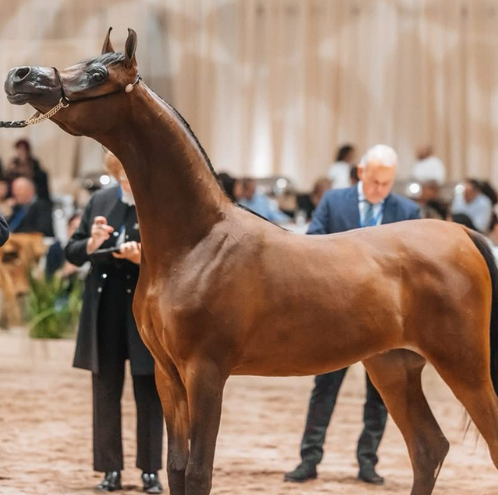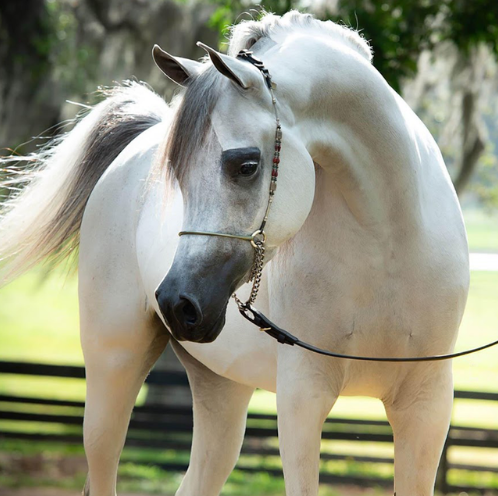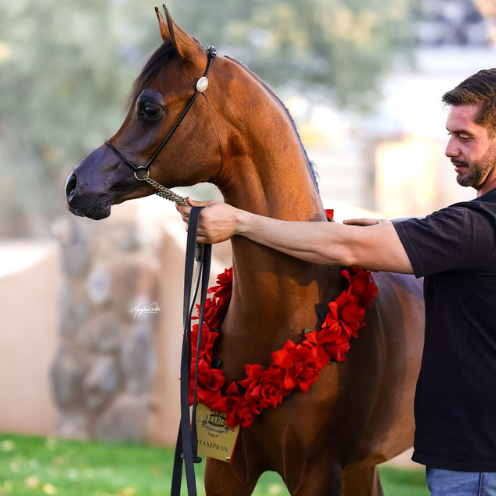Arabian Horse Breeding & Bloodlines
The Arabian horse is more than a breed — it’s a living piece of history. Its lineage traces back over 4,000 years to the deserts of the Arabian Peninsula, where nomadic Bedouins bred horses not just for beauty, but for endurance, courage, and loyalty.
Every modern light horse breed — from the Thoroughbred to the Quarter Horse — carries Arabian blood. Their influence is the foundation of refinement, intelligence, and stamina seen across equestrian disciplines today.
At Al Ameera Stud, breeding is not about quantity — it’s about preserving the Arabian’s pure essence: the balance of body, mind, and soul that defines this ancient horse.
The Legacy of Purebred Arabians
The purebred Arabian has maintained its integrity for thousands of years. Unlike many modern breeds, Arabians were bred under the harshest conditions, ensuring only the strongest, kindest, and most intelligent survived.
This purity has created a horse that’s genetically consistent — compact, refined, and noble in every sense. Whether bred for halter, endurance, or companionship, each carries a timeless identity that transcends generations.
The Five Classic Strains of the Arabian Horse
Historically, Bedouin tribes identified five main strains (or families) of the Arabian horse, each with distinct traits and temperaments. These strains form the core of classical Arabian breeding philosophy.
| Strain | Characteristics |
|---|---|
| Kehilan | Powerful, bold, athletic build — known for courage and stamina |
| Seglawi | Graceful, refined, elegant head — ideal for halter and show |
| Abeyan | High tail carriage, intelligence, and noble presence |
| Hadban | Larger frame, versatile working ability, loyal nature |
| Hamdan | Balanced temperament, smooth gaits, gentle disposition |
Modern breeding programs often trace back to one or a blend of these ancient lines to balance strength, refinement, and spirit.
Key Global Bloodlines and Families
Over centuries, the Arabian has spread from the Middle East to Europe and the Americas, producing distinct yet related bloodline groups.
Major Bloodline Families:
-
Egyptian Arabians: The purest and most historically preserved strain. Distinct dished faces, fine skin, and pronounced beauty.
-
Polish Arabians: Bred for war and sport; athletic, powerful, and known for longevity.
-
Russian Arabians: Deep-bodied, well-boned, and bred for performance.
-
Crabbet (English) Arabians: Balanced, classic profiles; excellent for riding and endurance.
-
Domestic U.S. Arabians: Blends of international lines, producing versatile modern horses.
Each type contributes something unique — and when bred with care, they complement one another beautifully.
The Philosophy Behind Arabian Breeding
Responsible Arabian breeding is an art form that combines science, instinct, and respect for heritage. At Al Ameera Stud, each pairing is chosen not only for physical conformation but for temperament, heart, and type.
Our Breeding Priorities Include:
• Authentic Arabian type and presence
• Correct structure and balance
• Soundness and athletic ability
• Gentle, intelligent disposition
• Pedigree strength through proven sires and dams
Every foal is the result of deliberate vision — a reflection of generations of refinement and a promise of the breed’s future.
Stallions and Mares — The Foundation of Every Program
Breeding success begins with selecting the right foundation stock.
Stallions bring charisma, presence, and movement — setting the tone for expression and power.
Mares contribute heart, intelligence, and the continuity of bloodline quality.
At Al Ameera, stallions and mares are matched based on genetic compatibility and complementary traits, ensuring every foal carries the best of both parents.
The Role of Pedigree and Genetics
Modern breeders use advanced DNA testing, genetic tracking, and pedigree analysis to ensure the purity and health of each foal. These tools help identify recessive traits, confirm lineage authenticity, and prevent hereditary issues.
But beyond data, the eye and instinct of an experienced breeder remain irreplaceable. The ability to “see” balance, elegance, and character in a horse — and know how to blend those qualities — is what separates good breeding from greatness.
The Modern Arabian Breeding Industry
Today’s Arabian breeding programs combine ancient bloodlines with modern management.
From international embryo transfer programs to global stud networks, Arabians are bred with care to meet diverse goals — halter, endurance, sport, and pleasure.
Trends in Modern Breeding:
• Focus on preserving authenticity amid globalization
• Growing demand for performance-oriented Arabians
• Emphasis on temperament and rideability
• Integration of technology for genetic health monitoring
Despite modernization, the essence remains unchanged — to preserve the soul of the Arabian horse.
The Future of Arabian Bloodlines
Every generation of breeders carries a sacred responsibility: to pass the Arabian forward unspoiled.
The mission at Al Ameera Stud is to continue producing horses that honor the past while inspiring the future — where the purity of type, balance of body, and kindness of spirit live on through each foal born.
The Arabian horse is not merely bred — it is cultivated, heart and heritage alike.
Contact Us for Inquiries or to Schedule a Visit
Whether you are searching for a future show prospect, a foundation mare, or a lifelong companion, we are happy to answer questions, share pedigree details, or help guide you toward the right Arabian horse.
Phone: (630) 215-5545
Email: alameerastable@gmail.com
Location: 24224 S 88th Ave, Frankfort, IL 60423
Visiting Hours: By appointment only
INTERNATIONAL INQUIRIES WELCOME
Explore More Arabian Horse Guides
Arabian Horse Guide (Main Page)
History of the Arabian Horse
Arabian Horse Bloodlines & Types
Arabian Horse Temperament & Intelligence
Arabian Horse Care & Feeding Guide
Arabian Horse Training & Performance Disciplines
Arabian Horse Breeding & Bloodlines Overview
Arabian Horse Conformation & Anatomy
Arabian Horse Prices & Buying Guide
Arabian Horse Registration & Pedigree Papers Explained
Arabian Horse Endurance & Athletic Ability




